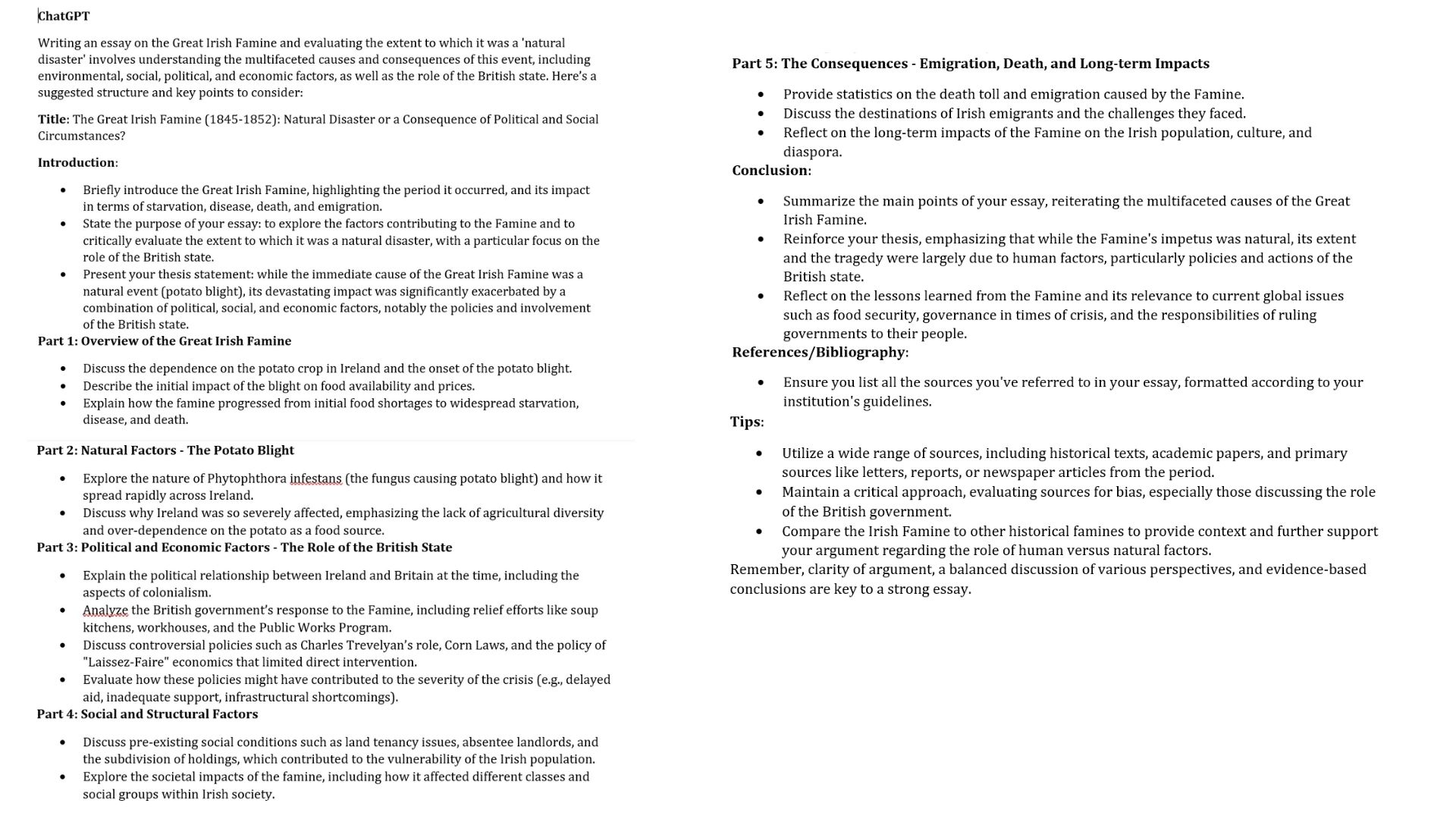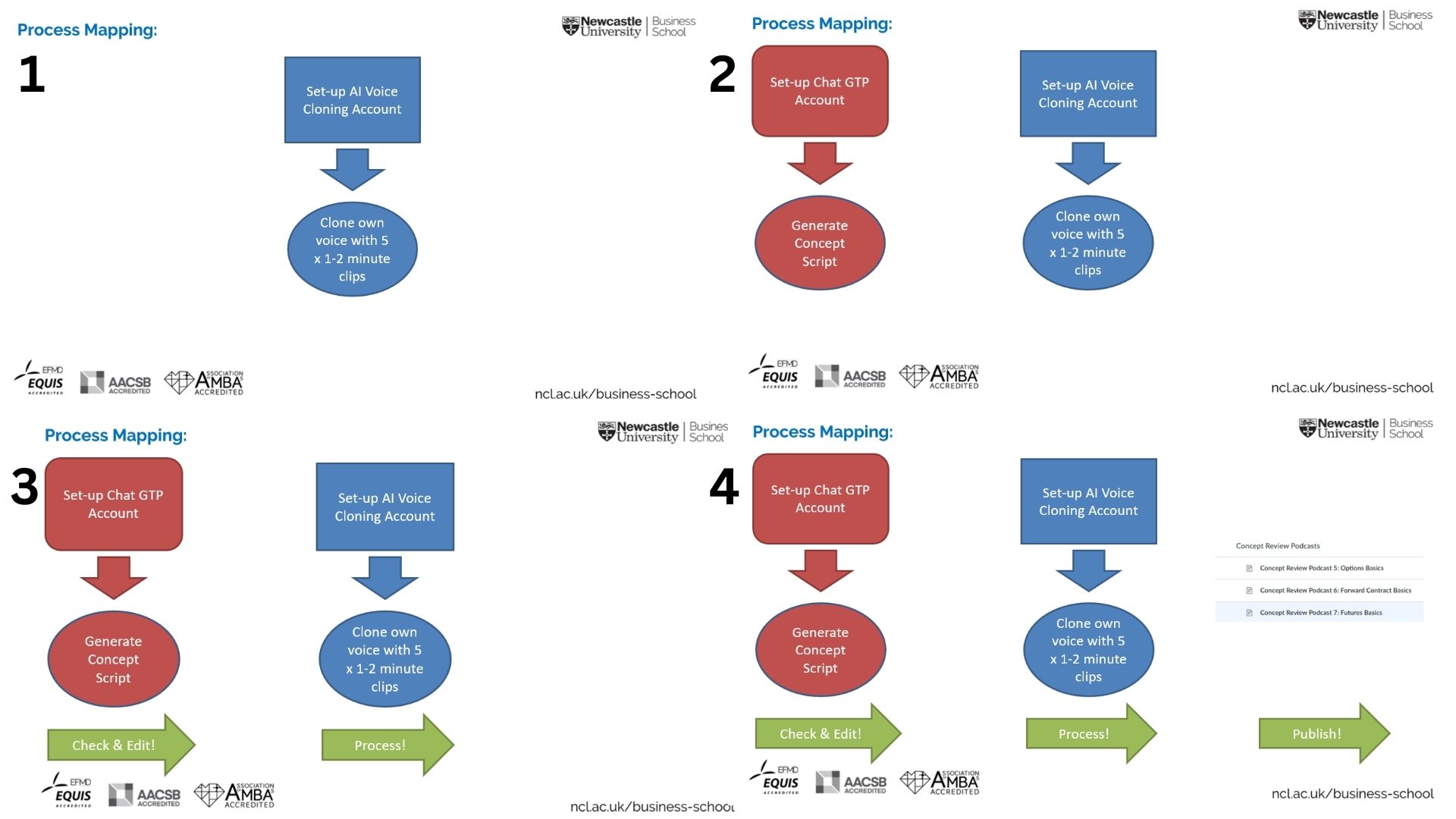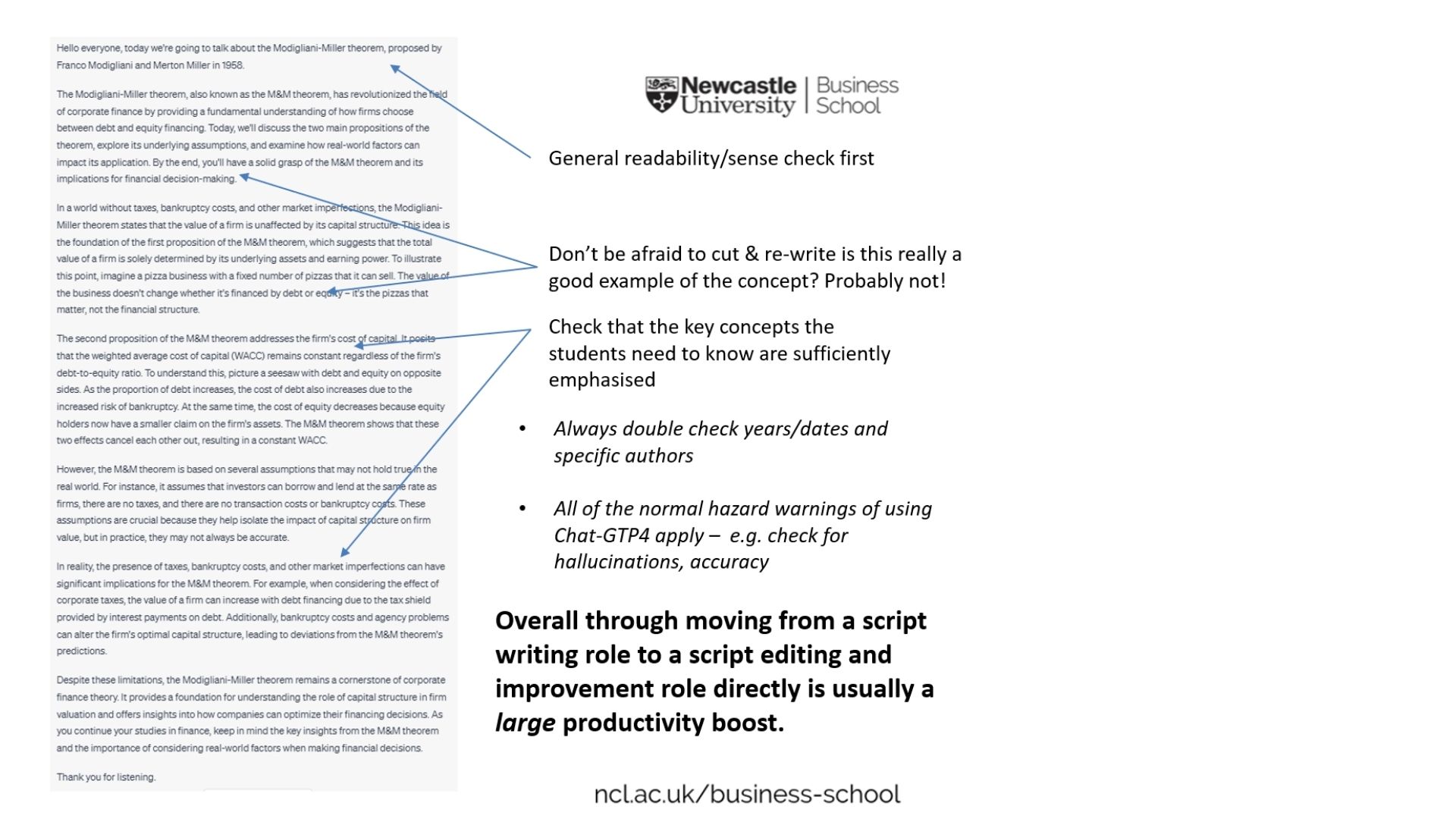At the start of 2024, our community responded enthusiastically to our call out for standout examples showcasing AI use in education. Thank you to all who have shared so far. As we are working on compiling the online resource, we wanted to share some of the submissions we’ve received already.
In this blog, we’ve included examples from both Further Education (FE) and Higher Education (HE) institutions, spanning various subject areas and utilising different AI tools. These examples cover both free and paid versions of AI technologies, providing valuable insights into how AI can be seamlessly integrated into education. We’re really excited about the potential of AI in education, and we’re committed to encouraging a culture of shared knowledge that benefits educators and learners alike. We hope the ideas will spark an interest and encourage you to give the tools a try.
1. Using ChatGPT 4.0 to create essay plans at North West Regional College (FE)
This example came from a History (Level 3) FE teacher at North West Regional College in Derry. They used ChatGPT 4.0 to create essay plans for students. This the prompt they used:
‘How can I structure an essay on the Great Irish Famine of 1845-52 and explore the extent to which it was a ‘natural disaster’ by critically evaluating all of the factors that contributed to starvation, disease, death, emigration; and also specific reference to the involvement of the British state?’
ChatGPT4 then returned a ready-to-use essay structure that the students could follow. See image:

The lecturer found little need for refinement of the output, prompting them to use it to craft multiple essay plans thereafter. Students found the essay plans very beneficial. It gave them a sound structure that reassured them in the reading and writing process, as well as prompting them to read more on specific topics and themes
2. A 5-minute AI image activity using Microsoft Copilot at South Staffordshire College (FE)
This example, shared by the Head of Digital Learning at South Staffordshire College, was circulated as an engaging and lively activity to get learners into the holiday spirit, while also introducing them to the world of AI tools. In this particular activity, students were tasked with creating AI-generated images in a structured way in class.
Microsoft Copilot (formerly known as Bing Chat) was used, showcasing the effective utilisation of freely accessible tools.
Activity steps:
- Visit Bing to kick off your creative journey. Go to Bing: https://www.bing.com/
- Use the search bar and enter a prompt: E.g. Create an AI-generated Christmas image of a snowman melting and looking worried.
- Click on the multi-coloured AI Copilot icon at the end of the search bar:

- Explore the AI-generated images that Copilot creates with the class. Choose an image that sparks their Christmas spirit. Feel free to get creative! Use Copilot’s suggestions and add a personal touch to the AI-generated image.
Learners were then encouraged to share their images with the group in their Microsoft Teams course chat and could forward the best ones to Marketing. This activity was a fantastic way to explore learners’ creativity while familiarising them with AI technology. While initially themed around Christmas, its flexibility means it can be used year-round, offering a versatile approach to promoting the use of AI tools and honing prompting skills.
3.Creating multiple choice quizzes and preparing lesson plans using ChatGPT 3.5 at New College Durham (FE)
These two notable examples sent in from the Lead Practitioner: eLearning at New College Durham included creating multiple choice quizzes in collaboration with Microsoft Forms, along with developing lesson plans and activities for a cover lesson. Each instance used ChatGPT 3.5.
Example 1. This targeted Level 2 Plumbing students, focusing on Health and Safety regulations in the UK workplace.
Steps:
- Input the prompt: “Create me a 10-question multiple choice quiz with 4 possible answers for my Level 2 Plumbing students on Health and safety in the work place in the UK. Summarise the answers at the end for me” into ChatGPT 3.5. The output given was spot on 99% of the time but as always, this needs to be checked by staff to ensure it is correct, as AI cannot be blamed for delivering incorrect content. Sometimes, therefore the output needs tweaking but this doesn’t take much time.
- Import this quiz directly into Microsoft Forms and assign marks per question so it becomes a self-marking quiz. This can then be set for the students in Teams.
- The students get instant feedback and the staff get instant results.
- Staff can then look at analytics in Forms and revisit ChatGPT to create revision guides or follow up activities, using the prompt: “Create me a revision guide on question X” or “Create me a 15-minute classroom activity to help them learn about question X”.
Educators are able to create something quickly that assesses for knowledge, are given instant results and are then doing something with those results. Students also receive instant feedback and benefit from revision guides to consolidate their learning. It is highly recommended to give working between Microsoft Forms and ChatGPT a try.
Example 2. A member of staff had called in sick on a Sunday but as there was no cover for the lessons, someone else had to lead the class instead. Ordinarily, the preparation of lessons and activities would have continued late into the night and prior to coming to work on a Monday morning. Instead, ChatGPT 3.5 was utilised.
“I downloaded the staff member’s SOL from SharePoint and input the relevant lessons into ChatGPT. I asked it to create me 2 x 2 hour lesson plans with activities, hand outs, quizzes and homework. It took me 30 mins in total, after editing/tweaking. The lessons were a success and the staff member came back after their illness to find the students had progressed as planned and were ready for the next topic.”
This saved a great deal of time, stress and anxiety for the member of staff and it was said that ChatGPT had “changed the way I work for the better”. Students’ learning remained unaffected, and they progressed according to plan.
4.Using ChatGPT 4.0 and DALLE-3 to create an HE ‘mega game’ for Immunology students at Cardiff University (HE)
This example was sent in by a Lecturer of Immunology. They said:
“One of the main challenges I have faced is getting students to see the link between different components of the immune system and how they work together to help defend the body. I have previously used Star Wars as a medium to teach immunology, helping to decontextualise the material (Immunology Wars). A colleague and I decided to try and take this a stage further and develop an Immunology Wars mega game, where groups of students are given different immunology scenarios and must trade resources with other groups (represented by planets of the Star Wars universe) to collect the correct immune components to fight off the disease.”
ChatGPT4 was used to help map out the different scenarios and resources that would be needed and to develop some “curve ball” moments, which then changed the scenario and required students to adapt their strategy. DALLE-3 was used to create some of the imagery for the resources.
For the workflow:
“Prompts were built up over quite a few conversations with GPT4 as there are various different aspects to the project. I first asked GPT4 to be a game designer and explain the mechanics of an in-person mega game. Based on that output I had to refine the prompt to clarify that it was going to be an education mega game. Next, I asked GPT4 to become an expert immunology educator with lots of experience developing games. I then got it to provide a broad outline of what an immunology focused mega game would look like. Following that I had to refine this and asked GPT4 to create 10 different scenarios which all involved an infection of some kind in an area of the body with a different type of pathogen. Each scenario was created one by one, with GPT4 outlining the nature of the infection, the key immune components involved in the body’s response to that infection and the time it takes for the body to produce these resources. Finally, I also asked GPT4 to create a series of chance cards for each scenario, which make the scenario easier or harder, so that we can challenge groups that are getting through their challenge too quickly or make it easier for groups that are struggling. To align this with Star Wars/Immunology Wars I fed in a list of the main characters that we have defined on the website and their corresponding immune components and asked GPT4 to align the two.
By and large the responses were fairly accurate and were usable, but I kept adding layers of complexity each time to slowly build up the different aspects of the game rather than trying to get everything out at once!”
This has been run as a trail with a group of student volunteers to identify the strengths and weaknesses of the game and it is being further refined with the longer-term goal of developing this into a teaching session and community building event. By in large, all the students enjoyed the concept and commented that it would probably make immunology more memorable. The lecturer said that “the proof will be when we try to scale it up and run with larger groups of students with each group playing on a different planet with different resources that they can trade with other groups.”
5.Podcasts at Newcastle University using ChatGPT 4 and ElevenLab’s Voice AI software (HE)
The final example in this blog was sent in by the Director of Digital Education and Senior Lecturer in Corporate Finance at Newcastle University.
“I have been experimenting with the creation of Educational Podcasts using both ElevenLab’s Voice AI software to clone my own voice and then using content from Generative AI (Chat-GPT4) to create content quickly.
Problem 1: Creating lots of useful little concept revision podcasts for students for the exams to help them study can be so time consuming. This is from having to re-record over and over again, dealing with filler words and ‘umms’ and ‘ah’s and spending upwards of 20 – 30 minutes getting a 3 minute recording to a good standard.
Problem 2: The script itself was a challenge – an average lecture may have upwards of 10-12 (or more) “nuggets” of key concepts. Each script for each “nugget” is around 500 words and may take between half an hour – an hour to perfect. This was unsustainable development times.
Solution 1: Using ElevenLab’s Voice AI software (£15 a month), clone your own voice to a good quality standard and use it to “read” a script perfectly first time, every time. If unhappy, the re-recording takes seconds to re-process rather than minutes to record again.
Solution 2: Use Chat-GPT4 ($20 a month) to write the concept outline so you are editing and checking rather than writing a script from scratch. Need to take into consideration hallucinations.”
Workflow:

Prompt used and inputted into ChatGPT 4: “You produce scripts for learning podcasts for university students studying [topic]. Your scripts are engaging and use good learning examples and analogies. Your script will always start specifically with “Hello everyone, today we’re going to talk about [topic].” and finish with “Thank you for listening.”
Then write an introduction, meaning a brief summary of the scripts main points. Then write the scripts body, meaning the main section of the script that provides more details, background and quotes from sources to support the scripts learning points. The first part of the body consists of the most important facts, the second part contains more background information. Then write a wrap up conclusion, leaving the listener with a final thought.
Do not produce the introduction, main body or conclusion as section headers – the script should be ready to read.”
See the image below for the output:

In terms of productivity, this has turned the process of creating a single 5 minute podcast on a particular “nugget” of information/topic from around 2 hours down to around 10 minutes – a huge time and productivity saving, and a resource students say they have found really useful.
It’s clear that AI technologies are revolutionising teaching and learning experiences. From crafting essay and lesson plans to utilising AI for podcast creation, the examples shared here illustrate the diverse ways in which AI is reshaping education across FE and HE institutions.
While these examples were tailored for specific subjects and situations, their adaptability highlights their potential for use across different subjects. The examples of both free and paid versions of AI tools reflect the educational community’s curiosity about the accessibility and effectiveness of different AI solutions. Exploring these variations empowers educators to make informed decisions that align with their teaching goals and financial constraints.
We’d like to thank all the contributors who have shared their standout examples in this blog post: North West Regional College; South Staffordshire College; New College Durham; Cardiff University; Newcastle University. We continue to invite you to share yours with us at NCAI@jisc.ac.uk or please reach out if you have any questions. We are currently creating a website to hold all the examples, but in the meantime we’ll continue to share some of them as they come in as blog posts.
Find out more by visiting our Artificial Intelligence page to view publications and resources, join us for events and discover what AI has to offer through our range of interactive online demos.
For regular updates from the team sign up to our mailing list.
Get in touch with the team directly at AI@jisc.ac.uk


One reply on “Innovative Insights: AI success stories from the community”
[…] on from our previous blog post and while our Resource Hub is being built, we wanted to share a few other standout examples […]